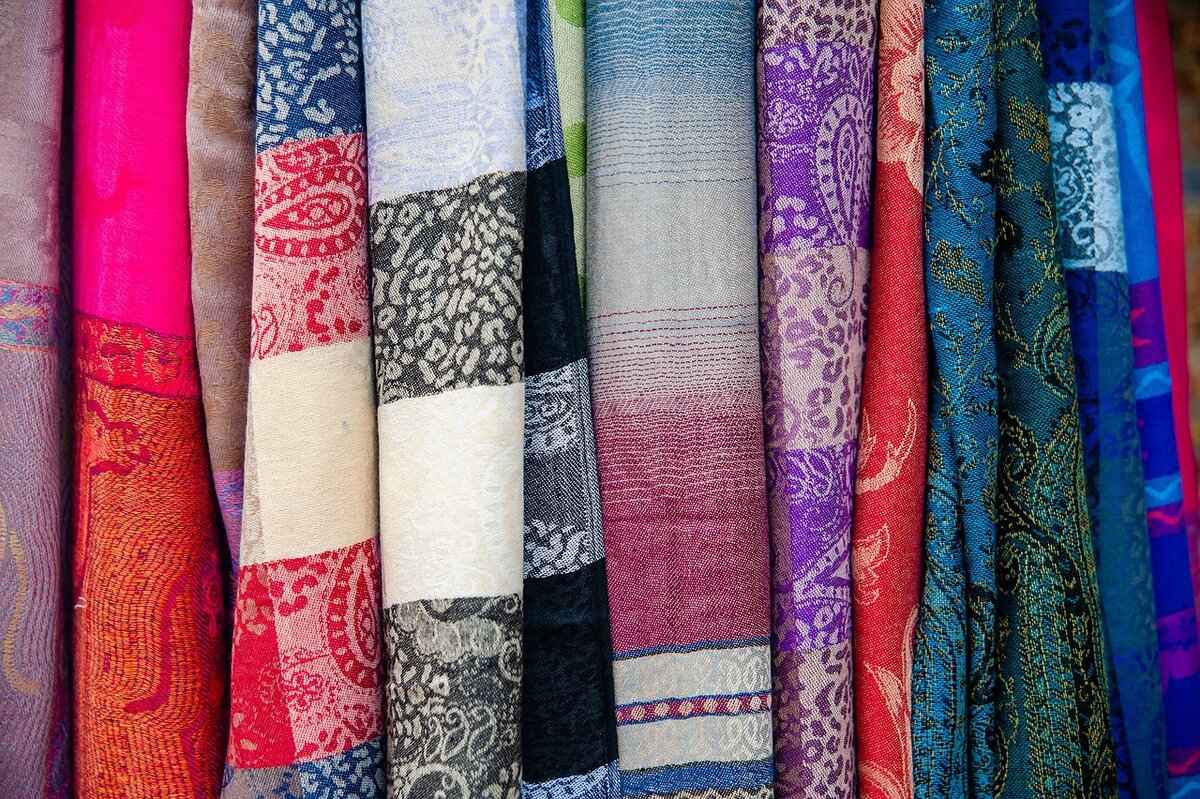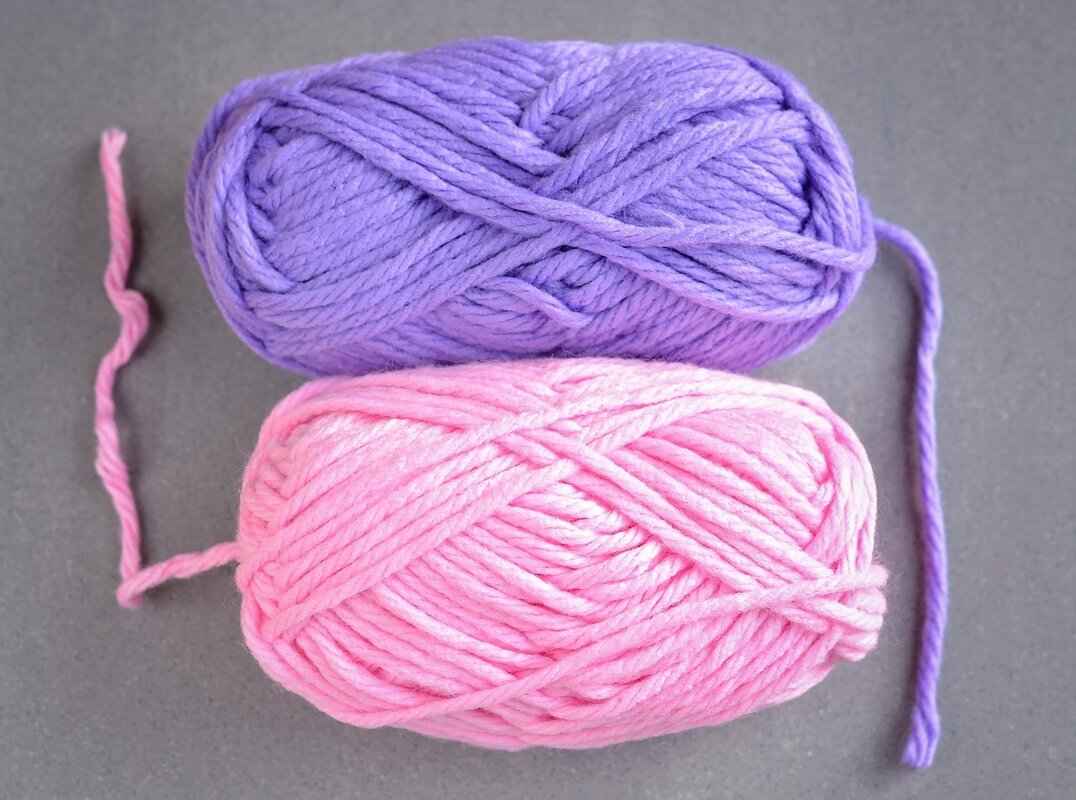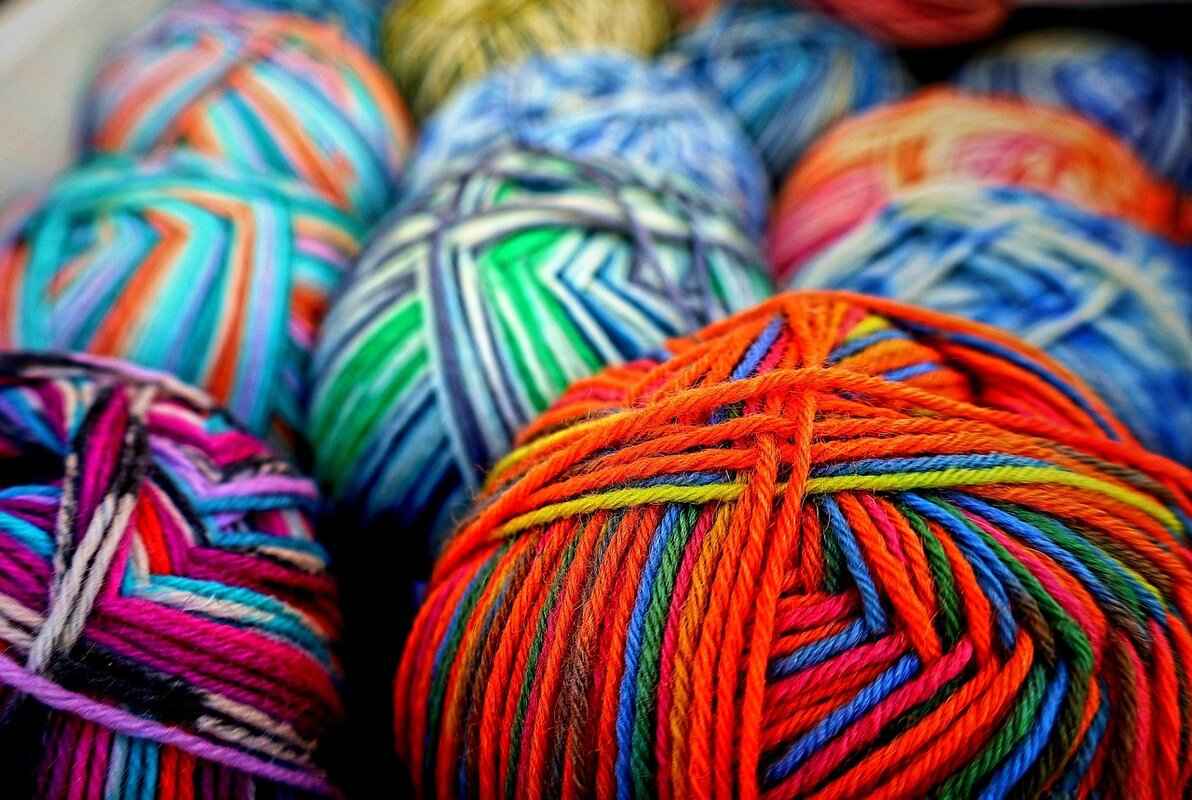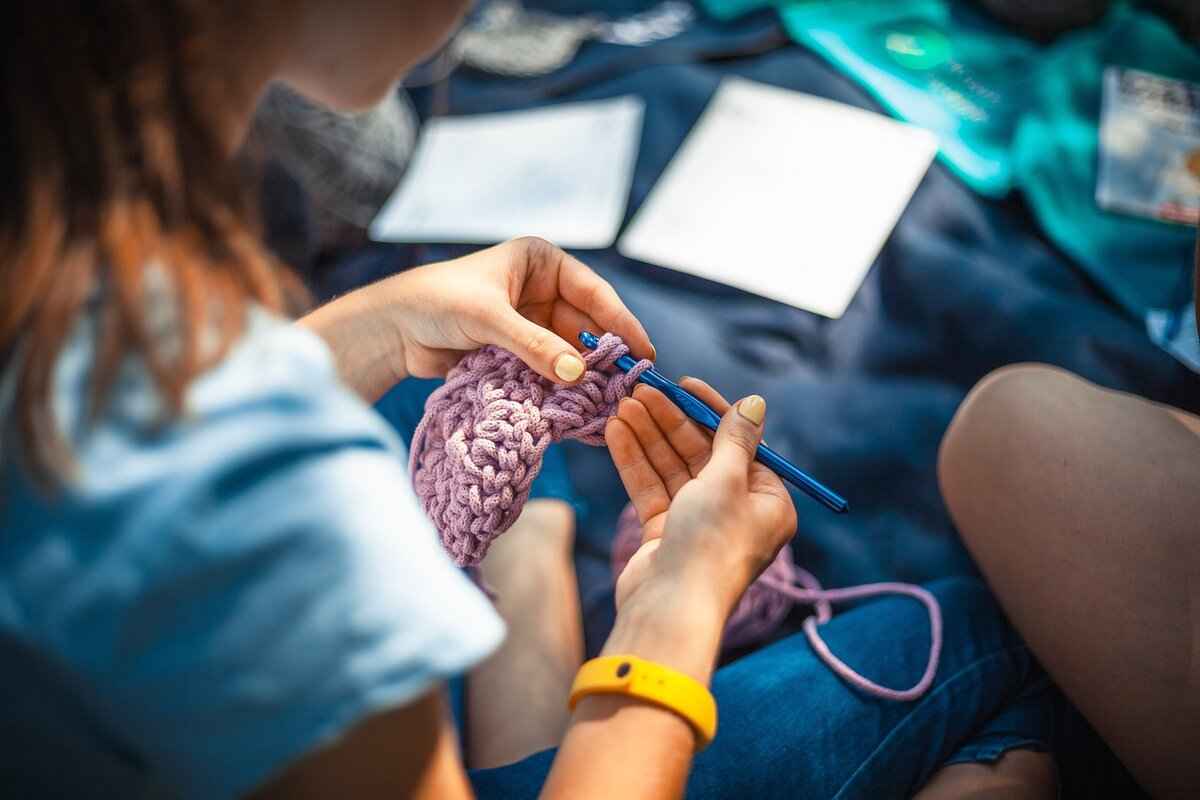This article provides a comprehensive guide to accurately counting rows in knitting, ensuring a seamless crafting experience without errors. Whether you’re a beginner or an experienced knitter, mastering the art of row counting is essential for achieving consistency in your projects.
Understanding the Importance of Counting Rows
Accurate row counting is crucial for maintaining the integrity of your knitting projects. When you count your rows correctly, you can ensure that your finished piece matches the intended design and dimensions. This section explores why row counting is essential for successful knitting.
- Consistency: Keeping track of your rows helps maintain uniformity in stitch patterns.
- Pattern Integrity: Accurate counts prevent pattern mismatch, ensuring your project looks as intended.
- Time Efficiency: Avoiding mistakes saves time and reduces frustration during the knitting process.
Common Mistakes in Row Counting
Identifying frequent errors in row counting can help knitters avoid frustration. Common pitfalls include:
- Miscounting During Pattern Changes: Transitioning between different stitch patterns can lead to errors. Strategies to keep track include using a row counter or writing down your counts.
- Distraction: Knitting in a noisy environment can lead to miscounts. Find a quiet space to focus.
- Inconsistent Tension: Changes in tension can affect your row count. Maintaining a consistent tension is key.
Using Stitch Markers Effectively
Stitch markers are invaluable for tracking rows. They can be placed at regular intervals to remind you to count or can indicate pattern changes. Here’s how to incorporate them into your knitting routine:
- Place markers at the beginning of each pattern repeat.
- Use different colors to signify different sections or stitch patterns.
- Count each row as you reach a marker to keep your counts accurate.
Maintaining Consistent Tension
Inconsistent tension can lead to inaccurate row counting. Here are some tips to achieve uniform tension:
- Practice regularly to develop muscle memory.
- Use the same yarn and needles throughout your project.
- Be mindful of your grip and the way you hold your yarn.
Counting Rows in Different Knitting Techniques
Different knitting techniques may require unique counting methods. For instance:
- In cabling, count rows between cables to ensure they align properly.
- For lace knitting, keep a separate count for the main body and the lace sections.
- In colorwork, track each color change to maintain pattern accuracy.
Tools to Assist in Counting Rows
Various tools can simplify the process of counting rows. Popular options include:
- Row Counters: Choose between digital and manual options based on your preference.
- Apps: Numerous apps are designed for knitters, offering features like row tracking and pattern management.
Best Practices for Counting Rows
Implementing best practices can enhance your row counting accuracy. Here are some practical tips:
- Establish a Counting Routine: Make it a habit to count after each row or pattern repeat.
- Use Visual Aids: Incorporate charts or diagrams to keep track of your progress visually.
Adjusting Your Count for Mistakes
Mistakes can happen, but knowing how to adjust your count is vital. Here’s how to recalibrate your row count:
- Identifying Where You Went Wrong: Review your work to pinpoint errors in your counting.
- Techniques for Backtracking: Retrace your steps carefully to regain your count without starting over.

Understanding the Importance of Counting Rows
When embarking on a knitting project, one of the most critical skills to master is accurately counting rows. This practice not only ensures that your project remains consistent but also helps maintain the integrity of the pattern you are working on. Without precise row counting, you may find yourself facing a myriad of issues, from uneven lengths to mismatched patterns. In this section, we will delve into the reasons why row counting is essential for successful knitting.
First and foremost, accurate row counting allows knitters to achieve uniformity in their projects. Whether you’re creating a sweater, scarf, or blanket, maintaining the same number of rows in each section is vital for a cohesive look. For instance, if you’re knitting a sweater, variations in row counts can lead to sleeves of different lengths or an unbalanced body shape. By counting rows accurately, you can ensure that each part of your garment aligns perfectly, resulting in a polished final product.
Moreover, precise row counting plays a significant role in pattern adherence. Many knitting patterns are designed with specific row counts in mind. If you deviate from these counts, you risk altering the intended design. This can lead to frustration, especially if you have to frog (rip out) your work to correct mistakes. By keeping a diligent count, you can follow patterns accurately and achieve the desired outcome without unnecessary setbacks.
Another crucial aspect of row counting is its impact on project planning. When you know exactly how many rows you have completed, you can better estimate the time and yarn needed for your project. This foresight can be particularly beneficial for larger projects, allowing you to manage your resources effectively and avoid running out of yarn mid-project.
Additionally, counting rows aids in maintaining tension consistency. Inconsistent tension can lead to uneven stitches, which can be exacerbated by losing track of your row count. By focusing on both your row count and tension, you can create a more uniform fabric, enhancing the overall quality of your knitting.
Finally, the practice of counting rows fosters a sense of mindfulness in your crafting. It encourages you to stay present and engaged with your work, which can be a meditative experience. This focus can improve your overall knitting skills, making you a more proficient and confident knitter.
In summary, accurately counting rows in knitting is not just a minor detail; it is a fundamental aspect that contributes to the success of your projects. From ensuring uniformity and adhering to patterns to aiding in project planning and maintaining tension, the importance of row counting cannot be overstated. By developing this skill, you will enhance your knitting experience and produce beautiful, consistent pieces.

Common Mistakes in Row Counting
Accurate row counting is essential for any knitter aiming for precision and consistency in their projects. However, even the most experienced knitters can fall prey to common mistakes that can lead to frustration and errors in their work. Understanding these pitfalls is the first step toward avoiding them, ensuring a smoother and more enjoyable knitting experience.
Many knitters encounter issues when counting rows, which can significantly impact the outcome of their projects. Here are some typical mistakes and tips on how to avoid them:
- Miscounting During Pattern Changes: Transitioning between different stitch patterns can often lead to confusion and miscounts. To mitigate this, keep a separate tally for each section of the pattern and double-check your count at each transition. Consider using a notebook to jot down your counts.
- Not Using Stitch Markers: Stitch markers are invaluable tools that can help you track your progress. Place a marker at the end of each row or after every few rows to create a visual cue. This practice can help you maintain focus and accuracy, especially in complex patterns.
- Inconsistent Tension: Variations in tension can lead to uneven row counts. To achieve consistent tension, practice maintaining an even grip on your yarn. Regularly check your work to ensure that your stitches are uniform, as this can greatly affect your counting accuracy.
- Counting Rows in the Wrong Direction: It’s easy to lose track of your counting direction, especially when distracted. Always count in the same direction—either from the bottom to the top or vice versa. This consistency will help you avoid confusion.
- Ignoring Mistakes: Overlooking a mistake in your count can lead to significant issues down the line. If you suspect an error, take the time to backtrack and correct it. This will save you from larger problems as you progress.
By being aware of these common mistakes and implementing strategies to avoid them, knitters can enhance their row counting accuracy. This not only leads to better results in their projects but also reduces frustration and enhances the overall enjoyment of knitting.
Incorporating a few simple practices into your routine can make a world of difference. Whether it’s using stitch markers, keeping a detailed count, or ensuring consistent tension, these techniques will help you become a more confident and precise knitter.
Miscounting During Pattern Changes
When engaging in the art of knitting, changing patterns can often lead to confusion and miscounts. This can be particularly frustrating, especially when you are deeply invested in your project. Understanding how to keep track of your rows during these transitions is essential for maintaining the integrity of your work. Below, we explore several effective strategies to help you navigate this challenge.
- Utilize Stitch Markers: One of the most effective tools for tracking your rows during pattern changes is the use of stitch markers. By placing a marker at the end of each completed row, you create a visual cue that helps you stay on track. This method is especially useful when switching between different stitch patterns, as it allows you to easily identify where one pattern ends and another begins.
- Maintain a Row Counting Journal: Keeping a dedicated row counting journal can significantly enhance your accuracy. Write down each completed row along with the corresponding stitch pattern. This practice not only helps you remember where you left off but also serves as a reference for future projects.
- Use a Digital Row Counter: For those who prefer technology, a digital row counter can be an invaluable asset. These gadgets allow you to easily increment your count with the push of a button, ensuring that you never lose track during intricate pattern changes. Many digital counters also have features that let you input notes, which can be useful for remembering specific details about each pattern.
- Adopt a Consistent Counting Rhythm: Developing a consistent rhythm in your counting can greatly reduce the likelihood of errors. Try to count your rows at the same point in your knitting routine, such as after every few stitches or at the end of each row. This consistency helps reinforce your memory and keeps your mind focused on the task at hand.
- Visualize the Pattern Changes: Before transitioning to a new stitch pattern, take a moment to visualize the change. This mental preparation can help you mentally track where you are in the project and anticipate the upcoming adjustments. Some knitters find it helpful to create a visual diagram of their patterns, allowing them to see the flow of the project at a glance.
In conclusion, miscounting during pattern changes is a common issue faced by many knitters. By implementing these strategies, you can enhance your row counting accuracy and enjoy a more seamless knitting experience. Remember, practice makes perfect, and over time, you will find the methods that work best for you.
Using Stitch Markers Effectively
Stitch markers are small but mighty tools in the knitting world. They serve as an essential aid for tracking your progress and ensuring precision in your projects. By incorporating stitch markers into your knitting routine, you can enhance your accuracy and avoid common pitfalls associated with row counting. This section will explore various ways to use stitch markers effectively, making your knitting experience smoother and more enjoyable.
- Types of Stitch Markers: Understanding the different types of stitch markers available can help you choose the right ones for your projects. Common types include:
- Plastic or Metal Rings: These are the most basic types and are great for marking stitches without adding bulk.
- Locking Stitch Markers: These are ideal for marking specific stitches, as they can be easily locked in place and removed when necessary.
- Colored or Decorative Markers: These not only serve a functional purpose but also add a touch of personality to your knitting.
- Placement of Stitch Markers: Knowing where to place your markers is crucial for effective tracking. Here are some tips:
- At the Beginning of a Row: Place a marker at the start of each row to easily identify your starting point.
- Between Pattern Changes: Use markers to signal where a pattern change occurs, helping you maintain accuracy across different sections.
- Every Ten Rows: For larger projects, consider placing a marker every ten rows to make counting easier.
- Using Stitch Markers for Complex Patterns: When working on intricate designs, stitch markers can be invaluable:
- Highlighting Repeats: Use markers to denote sections that repeat, allowing you to focus on one part of the pattern at a time.
- Tracking Increases and Decreases: Place markers at points where you need to increase or decrease stitches, ensuring you don’t lose track of your shaping.
Integrating Stitch Markers into Your Routine: To maximize the benefits of stitch markers, consider the following practices:
- Develop a Habit: Make it a routine to use stitch markers at the beginning of each project. This will help you develop a consistent approach to counting rows.
- Experiment with Different Types: Try out various styles of stitch markers to find the ones that work best for you and your knitting style.
- Keep Them Accessible: Have a dedicated pouch or container for your stitch markers, ensuring they are easily accessible when you need them.
Incorporating stitch markers into your knitting routine can significantly enhance your accuracy and enjoyment. By understanding their types, placement, and practical applications, you can avoid common counting mistakes and focus on creating beautiful knitted pieces. So, grab your stitch markers and elevate your knitting game today!
Maintaining Consistent Tension
in knitting is essential for achieving accurate row counts and a polished finished product. Inconsistent tension can lead to a variety of issues, including uneven stitches, miscounts, and even project failure. This section will explore practical tips and techniques to help you maintain uniform tension throughout your knitting projects.
One of the first steps in achieving consistent tension is to understand your knitting style. Every knitter has a unique way of holding their yarn and needles, which can influence the tension of your stitches. Take some time to observe your technique and make adjustments as needed. You may find that altering your grip or the way you wrap the yarn around your fingers can lead to improved consistency.
Another effective method to maintain uniform tension is to practice regularly. The more you knit, the more your hands will become accustomed to the movements required for consistent tension. Set aside time each week to practice different stitches and techniques. This will not only enhance your skill but also help you develop muscle memory for maintaining even tension.
Using the right tools can also make a significant difference in your tension. Consider investing in high-quality needles that suit your knitting style. For instance, circular needles can provide more control and stability, while interchangeable needles allow you to easily switch sizes, helping you find the perfect fit for your project. Additionally, using a yarn guide can help keep your yarn at a consistent tension as you knit.
Additionally, monitoring your yarn tension while you knit is crucial. Be mindful of how tightly or loosely you pull the yarn. If you notice that your tension varies throughout your project, take a moment to pause and adjust. You can also use a tension gauge to check your stitches periodically, ensuring that they remain even.
Creating a comfortable knitting environment can also contribute to maintaining consistent tension. Ensure that you are seated comfortably, with good lighting and minimal distractions. A relaxed atmosphere can help you focus on your knitting, reducing the likelihood of tension fluctuations caused by discomfort or interruptions.
Finally, experiment with different yarns to find the best match for your knitting style. Some yarns are more forgiving than others when it comes to tension. For example, fibers like wool tend to have more elasticity, which can help maintain even tension, while cotton may require more careful handling. By choosing the right yarn, you can significantly improve your chances of achieving consistent tension.
In summary, maintaining consistent tension in knitting is vital for accurate row counting and overall project success. By understanding your knitting style, practicing regularly, using the right tools, monitoring yarn tension, creating a comfortable environment, and experimenting with different yarns, you can enhance your knitting experience and produce beautiful, uniform results.
Counting Rows in Different Knitting Techniques
Knitting is a beautiful craft that allows for creativity and expression through yarn and needles. However, the different techniques in knitting can lead to varying challenges, especially when it comes to counting rows accurately. Understanding how to adapt your counting methods based on the technique you are using is essential for achieving consistency and precision in your projects.
Each knitting technique may require a distinct approach to counting rows. For instance, garter stitch is straightforward, as each row is knit, making it easy to keep track. However, stockinette stitch introduces a challenge; you must count both knit and purl rows to maintain the correct count. To tackle this, consider the following strategies:
- Use a Row Counter: Employing a row counter can simplify tracking your progress, especially in complex patterns.
- Mark Every 10 Rows: For techniques like lace knitting, where pattern repeats are common, marking every ten rows can help you quickly assess your progress.
- Color Coding: If you’re working with multiple colors or stitches, using different colored yarns can visually assist in counting rows.
When working with cables, counting can become trickier due to the intricate nature of the stitches. It’s beneficial to:
- Keep a Written Log: Jot down your row counts as you go, especially when you make cable twists.
- Use Stitch Markers: Place markers at the beginning of each row to create visual checkpoints.
In techniques like intarsia, where multiple colors are used, you may find it helpful to:
- Count After Each Color Change: This ensures that you keep track of your count without losing your place.
- Utilize a Chart: Following a chart can help you visualize the pattern and maintain your row count simultaneously.
For fair isle knitting, where you alternate colors frequently, consider using a systematic approach to maintain your count. You might:
- Count in Groups: Count your rows in groups of five or ten to make it easier to keep track.
- Employ Digital Tools: Apps designed for knitters can provide an easy way to log your progress and alerts for when to change colors.
In summary, adapting your counting strategy based on the knitting technique you are using is vital. Whether you are working on simple garter stitch or complex lace patterns, employing the right methods can help you avoid mistakes and enhance your knitting experience. By using tools, maintaining a consistent routine, and leveraging visual aids, you can ensure a smooth crafting journey.

Tools to Assist in Counting Rows
For knitters, maintaining accuracy in row counting is essential to ensure that projects progress smoothly and patterns remain consistent. Fortunately, various tools can simplify the process of counting rows, allowing knitters to focus more on their craft and less on the potential for errors. This section reviews some popular tools that can aid knitters in maintaining accuracy during their projects.
Row Counters: Digital vs. Manual
Row counters come in two primary forms: digital and manual. Digital row counters are electronic devices that can be easily reset and often include features such as memory functions and the ability to count in both directions. They usually have a display screen that shows the current row count, making it easy to read at a glance. On the other hand, manual row counters are simple mechanical devices or even paper-based systems that require the user to physically turn a dial or mark a tally for each row completed. While manual counters can be more affordable and straightforward, they may not offer the same level of convenience as their digital counterparts. Ultimately, the choice between digital and manual row counters depends on personal preference and knitting habits.
Using Apps for Row Counting
In our increasingly digital world, many knitters are turning to mobile applications designed specifically for tracking row counts. These apps are available on various platforms, including iOS and Android, and often come with additional features such as pattern storage, stitch markers, and reminders for when to count your rows. Some popular apps include Knitting Row Counter and Knit Companion, which allow users to keep track of their progress in a user-friendly interface. By utilizing these apps, knitters can easily manage multiple projects and ensure they stay on track without the hassle of manual counting.
Stitch Markers: A Simple Yet Effective Tool
Stitch markers are small devices that can be placed on the needle to indicate specific rows or sections of the project. They come in various forms, such as plastic rings, clips, or even yarn loops. By placing a stitch marker at the end of every ten rows, for instance, knitters can quickly assess their progress and avoid losing their place. This method not only helps in counting rows but also serves as a visual aid to remind the knitter of their progress in the pattern. Incorporating stitch markers into your routine can significantly enhance accuracy and confidence in your knitting.
Row Counting Notebooks
For those who prefer a more traditional approach, a dedicated row counting notebook can be an invaluable tool. These notebooks often feature pre-printed grids or charts that allow knitters to jot down their row counts alongside notes about their patterns. This method not only helps in tracking rows but also provides a space to record any adjustments made during the knitting process. By keeping a detailed log of progress, knitters can easily refer back to previous projects for future reference, making this an excellent tool for both beginners and experienced knitters alike.
Conclusion
In summary, various tools are available to assist knitters in counting rows accurately. Whether you prefer digital counters, mobile apps, stitch markers, or traditional notebooks, the right tool can significantly enhance your knitting experience. By integrating these tools into your routine, you can maintain accuracy and focus on what you love most—creating beautiful knitted projects.
Row Counters: Digital vs. Manual
When it comes to knitting, keeping track of your row count is essential for achieving the desired result. One of the key decisions knitters face is whether to use digital or manual row counters. Each option has its own set of advantages and disadvantages that can significantly affect your knitting experience. In this section, we will delve into the details of both types of row counters to help you make an informed choice.
Digital row counters are electronic devices that allow knitters to keep track of their rows with ease. They often come with features such as:
- Memory functions to store previous counts
- Multiple counting modes for various projects
- Audible alerts to signal when a specific row is reached
These counters can be particularly useful for complex patterns where precision is key. The ease of use and quick adjustments make them appealing, especially for those who knit frequently or tackle intricate designs. However, they do require batteries and can malfunction if not handled properly.
Manual row counters, on the other hand, are simple mechanical devices or even paper-based systems that allow knitters to tally their rows. Some common features include:
- Durability as they do not rely on batteries
- Portability since they are often lightweight and easy to carry
- Cost-effectiveness as they are generally cheaper than digital options
Many knitters appreciate the tactile experience of clicking a manual counter after completing each row. However, they may not offer the same level of functionality as digital counters, especially for more complicated projects.
Choosing between digital and manual row counters involves weighing their respective pros and cons. Below is a comparison table to illustrate these differences:
| Feature | Digital Row Counters | Manual Row Counters |
|---|---|---|
| Ease of Use | Very easy, with buttons for quick counting | Requires manual input, which can be slower |
| Battery Life | Dependent on batteries, may run out | No batteries needed, always ready |
| Complexity | Can handle complex patterns easily | Best for simpler projects |
| Cost | Generally more expensive | More affordable options available |
Ultimately, the choice between a digital or manual row counter depends on your personal preferences and knitting style. If you value technology and often work on intricate patterns, a digital counter may be the way to go. Conversely, if you prefer simplicity and a tactile experience, a manual counter could suit your needs better. Regardless of your choice, the most important aspect is to find a counting method that enhances your knitting experience and helps you achieve the best results.
Using Apps for Row Counting
In the modern world of knitting, technology has become an essential ally for knitters looking to enhance their crafting experience. With the advent of mobile applications specifically designed for knitters, tracking row counts has never been easier or more efficient. These apps not only simplify the counting process but also offer additional features that cater to various knitting needs. Below, we will explore some of the most effective apps available for row counting, along with their unique functionalities.
- Row Counter Pro: This app is a favorite among knitters for its user-friendly interface. It allows users to easily track their row counts with a simple tap. Additionally, it offers features like saving multiple projects, setting reminders for when to count rows, and even a built-in timer for those who prefer to knit at a steady pace.
- Knit Companion: More than just a row counter, Knit Companion is a comprehensive tool for knitters. It provides a row counting feature alongside the ability to read patterns directly from the app. Users can highlight their current row, add notes, and even create custom stitch markers, making it an invaluable tool for complex projects.
- Knitting Row Counter: This app focuses on simplicity and ease of use. It allows knitters to quickly log their row counts and provides visual feedback on their progress. The app also includes a history feature, enabling users to track their progress over time and revisit previous projects.
- Stash2Go: While primarily designed for managing yarn stashes, Stash2Go includes a robust row counting feature. This app allows knitters to integrate their row counts with their yarn inventory, helping them keep track of which yarns are used in which projects.
When choosing an app for row counting, consider the following factors:
- User Interface: A clean and intuitive interface will make it easier to log your counts without disrupting your knitting flow.
- Additional Features: Look for apps that offer more than just row counting, such as pattern tracking and project management.
- Compatibility: Ensure that the app is compatible with your device and operating system for a seamless experience.
Incorporating these apps into your knitting routine can significantly enhance your accuracy and efficiency. By leveraging technology, knitters can focus more on their creativity and less on the potential for errors in counting. Whether you are a beginner or an experienced knitter, these tools can help you maintain consistency in your projects and elevate your knitting experience.

Best Practices for Counting Rows
Accurate row counting is a vital skill for any knitter, significantly impacting the overall success of your projects. Implementing best practices can enhance your row counting accuracy, making your knitting experience smoother and more enjoyable. Below are practical tips that can be easily integrated into your knitting routine.
- Establish a Consistent Counting Routine: Developing a habit of counting rows after every few stitches can greatly improve your accuracy. Set specific intervals—like every 10 stitches or after completing a pattern repeat—to pause and count. This approach not only helps in maintaining an accurate count but also allows you to catch mistakes early on.
- Utilize Stitch Markers: Stitch markers are invaluable tools in knitting, especially for row counting. Place a marker at the end of every completed row or after a set number of stitches. This visual cue will remind you where you left off, reducing the chances of losing your place.
- Incorporate Visual Aids: Charts and diagrams can serve as excellent visual aids for tracking your progress. Keep a printed chart of your pattern nearby, and mark off each row as you complete it. This method not only helps with counting but also reinforces your understanding of the pattern.
- Maintain Consistent Tension: Variations in tension can lead to miscounts, especially in patterns that require precise stitch counts. Focus on achieving a uniform tension throughout your knitting. Practice techniques such as holding your yarn consistently and using the same amount of pressure when pulling your stitches.
- Use Technology Wisely: There are numerous apps and digital tools available that can assist with row counting. Explore options like row counter apps that allow you to input your count easily and even set reminders for when to count. These tools can complement your traditional counting methods.
- Keep a Knitting Journal: Documenting your progress in a knitting journal can be beneficial. Jot down the number of rows completed, any changes made to the pattern, and notes on tension. This practice not only helps with counting but also serves as a reference for future projects.
By integrating these best practices into your knitting routine, you can significantly enhance your row counting accuracy. Each tip offers a practical solution to common challenges faced by knitters, ensuring that your projects remain consistent and enjoyable.
Establishing a Counting Routine
Creating a consistent counting routine is essential for improving accuracy in knitting. By developing a habit that suits your personal style, you can significantly reduce the chances of miscounting rows, leading to more successful projects. In this section, we will explore various strategies to help you establish an effective counting routine.
- Set a Specific Counting Interval: Choose a specific point in your knitting where you will stop to count your rows. This could be after completing a certain number of stitches or after finishing a particular section of your pattern. By setting a clear interval, you can create a natural pause in your knitting process, making it easier to keep track of your progress.
- Use a Consistent Method: Whether you prefer counting out loud, using a row counter, or marking your progress on a piece of paper, stick to one method consistently. This will help reinforce the habit and make it second nature over time.
- Incorporate Visual Cues: Visual aids can be incredibly helpful in establishing a counting routine. Consider using stitch markers, sticky notes, or even a dedicated notebook to track your counts. These tools serve as reminders and can help you stay organized.
- Practice Mindfulness: Being present in the moment while knitting can enhance your focus and accuracy. Take a deep breath before you start counting, and ensure that you are not distracted by your surroundings. This mindfulness practice can improve your overall counting routine.
- Review and Adjust: After completing a few projects, take the time to review your counting routine. Assess what worked well and what didn’t. Adjust your methods based on your experiences, and don’t hesitate to try new techniques to find what best suits you.
Establishing a counting routine requires patience and practice, but the rewards are well worth the effort. A consistent approach will not only enhance your accuracy but also boost your confidence as a knitter. Remember, the goal is to create a habit that feels comfortable and natural to you.
By integrating these strategies into your knitting sessions, you can develop a reliable counting routine that minimizes errors and maximizes your enjoyment of the craft. Happy knitting!
Visual Aids for Row Counting
Visual aids play a significant role in enhancing the understanding and retention of information, especially in intricate tasks like knitting. When it comes to counting rows, incorporating visual tools such as charts and diagrams can dramatically improve accuracy and ease of tracking your progress. This section delves into effective methods for utilizing visual aids to streamline your row counting process.
One of the most effective ways to keep track of your rows is through the use of charts. These visual representations can break down complex patterns and help knitters visualize their progress. For example, creating a simple chart that outlines each row and its corresponding stitch pattern can serve as a roadmap for your project. By marking off each completed row, you not only maintain focus but also gain a sense of accomplishment as you see your progress unfold.
Another useful visual tool is diagrams. Diagrams can illustrate stitch techniques and provide a visual reference for complicated patterns. By having a diagram at hand, knitters can quickly refer to it when they are unsure about a particular stitch or row. This visual cue can significantly reduce the chances of miscounting and ensure that you stay on track.
- Color-Coding: Consider using different colors in your charts or diagrams to represent various stitches or sections of your project. This method not only makes the chart more visually appealing but also allows for quick identification of patterns and changes.
- Row Markers: Incorporate symbols or images in your charts that represent completed rows. This can help you quickly identify where you left off, especially in larger projects.
- Progress Trackers: Use graphical progress trackers that visually depict your completion rate. This can motivate you to keep going and provide a clear picture of how much work is left.
In addition to charts and diagrams, you can also create a visual log of your knitting journey. This could be a scrapbook or digital document where you not only track your row counts but also include photos of your work at various stages. This visual documentation can serve as a reference for future projects and help you reflect on your progress over time.
Ultimately, the key to effective row counting lies in finding the right balance of visual aids that work for you. Experiment with different methods and see which ones resonate with your knitting style. The more you engage with these tools, the more intuitive your counting process will become, leading to a more enjoyable and error-free knitting experience.

Adjusting Your Count for Mistakes
Mistakes in knitting can be frustrating, but they are a common part of the crafting process. The key to overcoming these challenges is knowing how to adjust your row count effectively. This section will explore various strategies to help you recalibrate your count when errors occur, ensuring your project stays on track.
Before you can adjust your count, it’s essential to pinpoint where the mistake happened. Common areas of confusion include:
- Pattern Changes: Transitioning between different stitch patterns can lead to miscounts.
- Lost Track During Distractions: External distractions can cause you to lose your place.
- Inconsistent Tension: Variations in tension can create confusion about row counts.
To identify errors, take a moment to review your work. Count the number of completed rows and compare it to your intended count. If you notice discrepancies, mark where you believe the mistake occurred, whether it was during a pattern change or due to distractions.
Once you’ve identified where the error occurred, backtracking can be an effective way to regain your count. Here are some techniques to consider:
- Counting Down: Start from the last confirmed row and count down to the point where you believe the mistake occurred. This method helps you visualize your progress.
- Using Lifelines: If you often find yourself needing to backtrack, consider using lifelines. A lifeline is a strand of yarn threaded through your stitches at a specific row, allowing you to unravel back to that point without losing all your progress.
- Marking Rows: Use stitch markers or a row counter to denote completed rows. This practice makes it easier to spot where you might have gone off track.
By employing these techniques, you can effectively retrace your steps and correct your row count without starting over.
Once you’ve backtracked and identified your error, it’s time to recalibrate your count. Here are some steps to follow:
- Adjust Your Current Count: If you’ve determined that you’ve completed more or fewer rows than you thought, simply adjust your count to reflect the actual number of completed rows.
- Document Changes: Keep a journal or a digital note of your adjustments. Documenting your changes can help you avoid similar mistakes in the future.
- Communicate with Fellow Knitters: If you’re part of a knitting group, share your experiences. Others may have faced similar issues and can offer advice on how they adjusted their counts.
Recalibrating your count not only helps you stay on track but also reinforces your overall knitting skills.
In conclusion, adjusting your row count after making mistakes is an essential skill for knitters. By identifying errors, employing backtracking techniques, and recalibrating your count, you can maintain the integrity of your project and enjoy a more satisfying knitting experience. Remember, every mistake is an opportunity to learn and improve your craft.
Identifying Where You Went Wrong
When it comes to knitting, accurate row counting is essential for ensuring that your projects turn out as intended. However, even the most experienced knitters can occasionally find themselves lost in their counting. is a crucial skill that can save you time and frustration. In this section, we will explore effective strategies for pinpointing errors in your counting, allowing you to correct them swiftly and efficiently.
Before diving into how to identify mistakes, it’s important to understand some of the common reasons why errors occur in row counting:
- Distractions: Knitting often takes place in social settings or while watching TV, leading to lapses in concentration.
- Pattern Changes: Switching between different stitch patterns can easily throw off your count.
- Inconsistent Tension: Variations in tension can lead to miscounts, especially if you’re not careful.
Once you’ve recognized that a mistake has occurred, the next step is to identify where the error lies. Here are some effective strategies:
- Check Your Last Count: Start by going back to the last point where you were confident in your count. This will help you establish a reference point.
- Count in Sections: Break your work into manageable sections and count each section separately. This can help you identify where the discrepancy may have arisen.
- Use a Row Counter: If you have been using a row counter, double-check its settings. Sometimes, the device may not reflect your actual progress.
Sometimes, a visual inspection can reveal counting errors. Look for:
- Stitch Consistency: Are your stitches uniform? Inconsistent stitch size can indicate that you’ve missed or added a row.
- Pattern Alignment: If you’re working from a pattern, check to see if your current row aligns with the expected pattern. If it doesn’t, you may have made an error.
If you’ve identified where the mistake occurred, it’s time to implement backtracking techniques:
- Unravel to the Mistake: Carefully unravel your work back to the point of error. This can be tedious, but it ensures that you are starting fresh from the correct row.
- Marking Mistakes: Use a contrasting yarn or stitch marker to indicate where you made a mistake. This will help you keep track of corrections in the future.
By employing these strategies, you can effectively identify where you went wrong in your row counting. Remember, mistakes are a natural part of the knitting process. With practice and patience, you will develop the skills to correct them swiftly, leading to a more enjoyable and successful knitting experience.
Techniques for Backtracking
In the world of knitting, mistakes are inevitable. Whether it’s a miscounted row or an incorrect stitch, knowing how to effectively backtrack can save your project from becoming a tangled mess. This section will explore various techniques that can help you retrace your steps and regain your count, ensuring that your knitting remains on track.
- Assess the Situation: Before diving into backtracking, take a moment to assess where the mistake occurred. Look at your last completed row and compare it with the pattern. Understanding what went wrong is crucial for a successful backtrack.
- Use a Lifeline: If you anticipate making changes or if you’re working on a complex pattern, consider using a lifeline. This technique involves threading a contrasting yarn through your stitches at a specific row. If you make a mistake later, you can easily rip back to the lifeline without losing your entire project.
- Count Backwards: When you identify an error, count backwards from your current position to find the last correct stitch. This method can help you pinpoint exactly where you deviated from the pattern, allowing you to correct it without unravelling too much work.
- Unravel with Care: If you need to undo stitches, do so carefully. Gently pull the yarn to unravel only the necessary stitches. Always remember to keep your yarn organized to avoid tangles.
- Mark Your Progress: To make backtracking easier in the future, consider using stitch markers or row counters. These tools can help you keep track of your progress and identify where mistakes may have occurred.
In addition to these techniques, it’s essential to maintain a calm mindset. Backtracking can be frustrating, but staying patient will help you navigate the process more effectively. Remember, knitting is a journey, and every mistake is an opportunity to learn and improve your skills.
Ultimately, mastering the art of backtracking will enhance your knitting experience. By implementing these techniques, you can ensure that your projects remain enjoyable and rewarding, even when faced with the occasional setback.
Frequently Asked Questions
- Why is counting rows so important in knitting?
Counting rows is essential because it ensures that your project maintains the correct dimensions and follows the intended pattern. Just like a recipe, if you skip or miscount a step, the final product can turn out completely different than expected!
- What are some common mistakes to avoid when counting rows?
Common mistakes include losing track during pattern changes, miscounting due to inconsistent tension, and forgetting to mark your rows. It’s like trying to keep your place in a book while flipping through pages—easy to lose track!
- How can stitch markers help with row counting?
Stitch markers act as visual cues, helping you keep track of your progress. By placing a marker at the end of each row or after a specific number of rows, you create a clear roadmap of your knitting journey!
- Are there any recommended tools for counting rows?
Absolutely! Tools like digital row counters, manual counters, or even knitting apps can simplify the counting process. Think of them as your trusty sidekick, making sure you never lose your way!
- What should I do if I realize I’ve miscounted?
If you spot a mistake, don’t panic! First, identify where you went wrong, then use backtracking techniques to retrace your steps. It’s like solving a puzzle—sometimes you just need to go back a few pieces!














